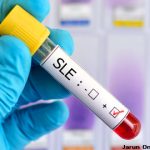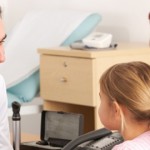TLR Ligands Increased in Siblings
When researchers looked at lipopolysaccharide levels, a toll-like receptor (TLR) 4 agonist often used as a representative marker for translocation, they found parent or child first-degree relatives of SLE patients showed increased microbial translocation, compared with sibling first-degree relatives and unrelated, healthy controls. SLE patients also exhibited elevated plasma lipopolysaccharide levels compared with healthy controls.
A positive correlation was found between plasma lipopolysaccharide and levels of anti-dsDNA IgG when the results of unrelated, healthy controls and first-degree relatives of SLE patients were combined, as well as when healthy controls and SLE patients were grouped together. At the individual level, significant positive correlations existed between lipopolysaccharide levels in plasma and anti-dsDNA levels in first-degree relatives, but not SLE patients.
When the researchers looked at the circulating microbiome, some similarities and differences in the microbiome composition of the two cohorts were revealed. At the phylum level, all individuals in the unrelated healthy control and first-degree relative cohort had similar bacteria in the top five—based on relative abundance when compared with all individuals in the healthy control and SLE cohort. However, compared with unrelated healthy controls, first-degree relatives had decreased species diversity within each sample. In addition, diversity of the circulating microbiome of SLE patients tended to decrease in comparison with healthy controls, but not to a significant level.
“Overall, this study establishes previously unknown direct relationships between plasma microbial translocation and autoantibody levels in first-degree relatives of SLE patients,” conclude the authors. “In addition, it demonstrated a circulating microbiome profile for first-degree relatives of SLE patients that is reduced in diversity compared to unrelated healthy controls, while SLE patients receiving treatment have a circulating microbiome profile with a diversity similar to that in healthy controls. Several bacteria were also identified as distinctive to SLE patients and their first-degree relatives, and further studies are needed to explore their direct or indirect roles in autoantibody formation and SLE pathogenesis.”
No. 1 Finding
“The number one thing we found was that [women] do have more gut permeability issues than men, and the amount of permeability correlates with autoantibody production,” says Dr. Gilkeson. “It was also interesting that we found differences in the bacteria product that was penetrating the gut when some of these stimulated the immune system to produce autoantibodies. In addition, some of the bacteria products were coming from the vaginal flora instead of the [gastrointestinal] tract.”
In the future, Dr. Gilkeson notes that some researchers speculate they may be able to determine if one or more bacterial products circulating in plasma factor into gut permeability or SLE development, which could lead to the identification of biomarkers for lupus.


